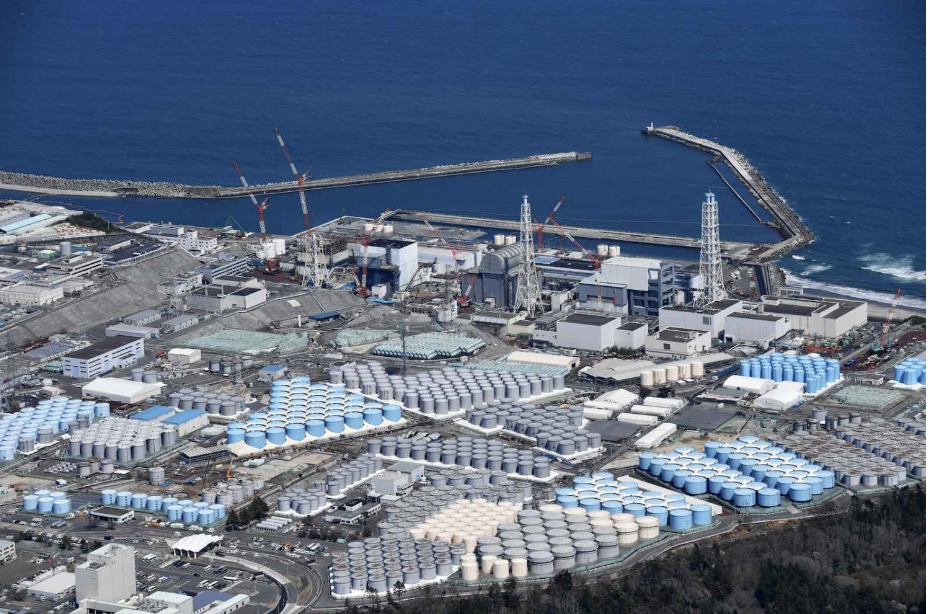Why Japan’s release of radioactive water might not be such a big deal
By Yancheng Zhao ’26
As tanks near capacity at Japan’s Fukushima Daiichi Nuclear Power Plant, Japan has started clearing them out by releasing thousands of tons of nuclear wastewater into the Pacific Ocean. Over the span of 30 years, Japan is projected to release about 350 million gallons of radioactive water currently stored in tanks at the power plant. The United States and the United Kingdom have both expressed support for Japan’s plan, while China and other neighboring countries have understandably raised concerns and expressed opposition. Though releasing all this radioactive water into the ocean may seem reckless at first, it is not as dangerous as countries like China are making it seem, who are using the situation as an opportunity to create fear and cast doubt on Japan.
In March 2011, a major earthquake and tsunami hit Fukushima and overwhelmed the seawalls at the Fukushima Daiichi power plant, leading to a massive nuclear meltdown. Workers had to flood the reactors with water to cool them down, contaminating the water with radioactive isotopes. The reactors continuously need water to stay cool, even to this day, leading to the current buildup of wastewater onsite. However, as these tanks are reaching capacity, Japan has begun its plan to discharge the water into the ocean, citing the need to reclaim the space taken up by the tanks to build new facilities necessary for decommissioning the plant.
Japan is taking countless steps to ensure the safety of the discharge, including many rounds of filtration. Before entering the ocean, already filtered water goes through another round of treatment and then is diluted hundreds of times with seawater. The water then goes through long underground tunnels to further dilute the water before it is released into the ocean. A system of emergency valves is in place to ensure no undiluted water is released, and staff can also shut down any discharge in the case of a natural disaster.
Between August 24 and September 11, 2023, with significant opposition from countries like China, Japan successfully discharged its first batch of water. The discharges went according to plan and concluded safely. Most scientists believe that, if carried out with the proper precautions, the plan will have a negligible impact on marine life and the environment. After an extensive two-year study, the International Atomic Energy Agency (IAEA), the United Nation’s nuclear regulatory body, came to a similar conclusion, agreeing that the impact of the wastewater will be negligible.
Japan’s government says that the final radiation in the water is much safer than the level required by the World Health Organization for drinking water. Additionally, the Tokyo Electric Power Company (TEPCO), which ran the power plant, has pledged to release no more than 22 trillion becquerels (a unit of emitted radiation) of tritium (a radioactive isotope of hydrogen) per year. By comparison, the Diablo Canyon Power Plant in California released water containing 95 trillion becquerels of tritium in 2022. When scrutinizing one country, such as Japan, cherry-picked details can get blown out of proportion. It is important to compare Japan in relation to other countries and realize that the water Japan is releasing is less radioactive than many regular discharges by other nuclear plants around the world.
However, there are still many vocal opponents of the plan, including fishing groups and neighboring countries. The government and TEPCO’s handling of the disaster in 2011 and a lack of transparency have led to distrust amongst the Japanese population. In a survey by the Asahi Shimbun, only 53% of respondents supported the government’s water discharge plan. Outside of Japan, the South Korean public has also voiced disapproval, leading to protests and rallies in Seoul calling for government action.
In particular, China has continued to express its opposition, going so far as to ban all seafood imports from Japan despite being previously the biggest buyer of Japanese seafood. Chinese Foreign Ministry Spokesperson Wang Wenbin called Japan “extremely selfish and irresponsible” and accused it of treating the ocean as its “private sewer.” Chinese news and media have spread outrage and hysteria about Japan’s release of radiation, leading to harassment and discrimination against Japanese citizens in China and thousands of phone calls to TEPCO.
Ironically enough, China itself is a major contributor to nuclear wastewater discharge, with at least ten nuclear plants in China discharging a combined total of more than 4.5 quadrillion becquerels of tritium. In an attempt to justify their hypocrisy, Wenbin stated, “There is a fundamental difference between the nuclear-contaminated water that came into direct contact with the melted reactor cores in the Fukushima nuclear disaster and the water released by nuclear power plants in normal operation.” Yet, contrary to what China argues, this “fundamental difference” does not exist. In reality, there is not that much difference between Japan’s release of nuclear wastewater from any other nuclear power plant. In an interview with TIME, professor of environmental science Jim Smith says that after treatment, the risk posed by tritium is not dependent on how the water was originally contaminated. Ultimately, China’s issue with Japan’s wastewater comes down to politics. Japan has handled this situation diligently, ensuring any remaining contaminants fall well beneath any safety regulations. While relations between the US and Japan grow stronger and tensions with Taiwan increase, China might be using this as an opportunity to distract the world from other problems it faces and instead stir up distrust and hatred for Japan.
Pictured: An aerial shot of the water tanks holding radioactive water at the Fukushima Daiichi Nuclear Power Plant (Lowy Institute)



